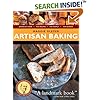This is pretty much all I know about my new home






Last night I went to Norm's, a bar in Fremont that allows dogs! I chose to bring Ari because he is so well behaved in public places, unless anything cute (puppies, kids) tries to touch him. We averted a few potential dangerous kid and puppy situations, but otherwise he did very well. The food wasn't especially exciting, but they did have a good happy hour.

I helped make my first loaf of sourdough bread recently. Wikipedia has some interesting science and history of sourdough information.....The sour taste is from lactic acid and acetic acid produced by lactobacilli. To make sourdough a starter or "sponge" is required, which contains the yeast culture, flour and water. The yeast is wild and captured in the air rather than coming from a store-bought package. The sponge must be fed daily with flour and water and used regularly to make new batches of bread. Starters have been passed on through generations and stay alive indefinitely (unless you go on vacation and don't get a sitter). The fermentation process helps make the gluten easier to digest and provides a source of probiotics to help with gut flora. Although the bacteria are killed during baking, so the benefits might be more related to the breakdown products from the bacteria or vitamins produced (biotin). I have to do more reading about this I guess!
Sourdough likely originated in Ancient Eygpt and was likely the first form of leavening available to bakers. Sourdough remained the usual form of leavening down into the European Middle Ages. Sourdough was the main bread used during the California Gold Rush and it remains a part of the culture of San Francisco today. The bread became so common that "sourdough" became a general nickname for the gold prospectors.
The sourdough tradition was carried into Alaska and the western Canadian territories during the Klondike Gold Rush. Conventional leavenings such as yeast and baking soda were much less reliable in the conditions faced by the prospectors. The sourdough starter, however, had to be kept warm to survive. Experienced miners and other settlers frequently carried a pouch of starter either around their neck or on a belt and were often fiercely guarded. Old hands came to be called "sourdoughs", a term that is still applied to any Alaskan old-timer.
San Francisco sourdough is the most famous sourdough bread made in the US. In contrast to the majority of the country, it has remained in continuous production for nearly 150 years, with some bakeries able to trace their starters back to California's territorial period. It is a white bread, characterized by a pronounced sourness (not all varieties are as sour as the San Francisco sourdough), so much so that the dominant strain of lactobacillus in sourdough starters was named Lactobacillus sanfranciscensis. (wikipedia)
I am going to attempt to make my own starter this week using the recipe below:
Day 1: mix...
2 T. whole grain flour (rye and/or wheat)
2 T. unsweetened pineapple juice or orange juice
Cover and let sit at room temperature for 24 hours.
Day 2: add...
2 T. whole grain flour
2 T. juice
Stir well, cover and let sit at room temperature 24 hours. At day 2 you may (or may not) start to see some small bubbles.
Day 3: add...
2 T. whole grain flour
2 T. juice
Stir well, cover and let sit at room temperature 24 hours.
Day 4:
Stir down, measure out 1/4 cup and discard the rest.
To the 1/4 cup add...
1/4 cup flour*
1/4 cup filtered or spring water
*You can feed the starter whatever type of flour you want at this point (unbleached white, whole wheat, rye). If you are new to sourdough, a white starter is probably the best choice. All-purpose flour is fine--a high protein flour is not necessary.
Repeat Day 4:
Once daily until the mixture starts to expand and smell yeasty. It is not unusual for the mixture to get very bubbly around Day 3 or 4 and then go completely flat and appear dead. If the mixture does not start to grow again by Day 6, add 1/4 tsp. apple cider vinegar with the daily feeding. This will lower the pH level a bit more and it should wake up the yeast.
Books I want on bread making:
 |

Artisan Baking by Maggie Glezer






No comments:
Post a Comment